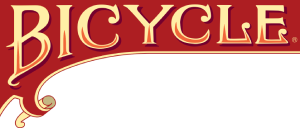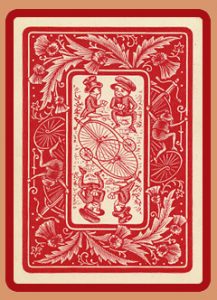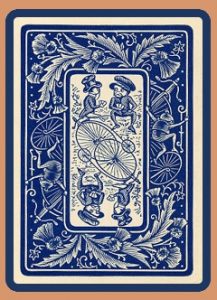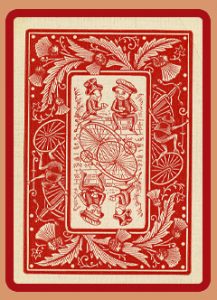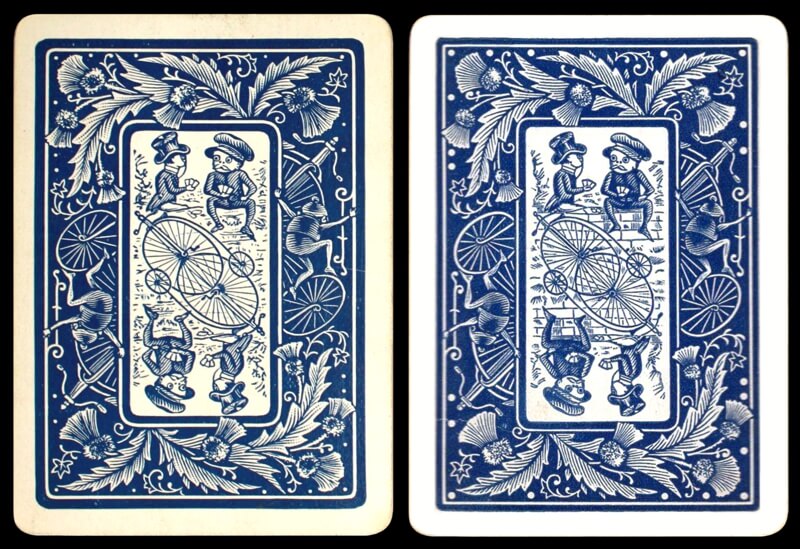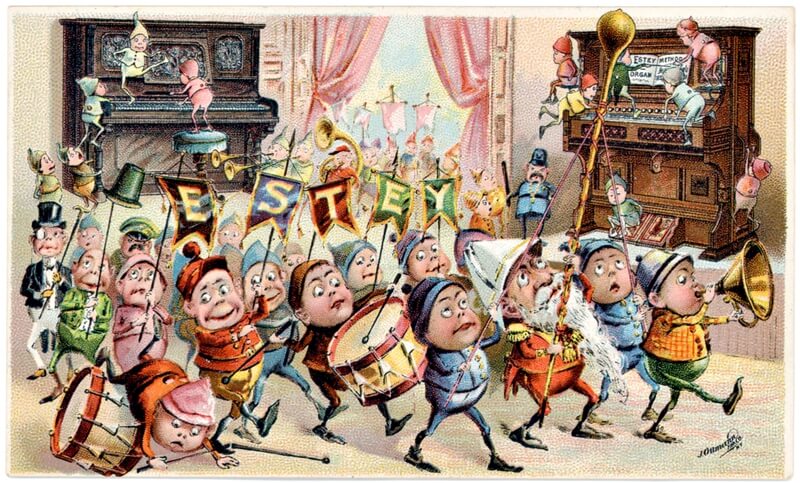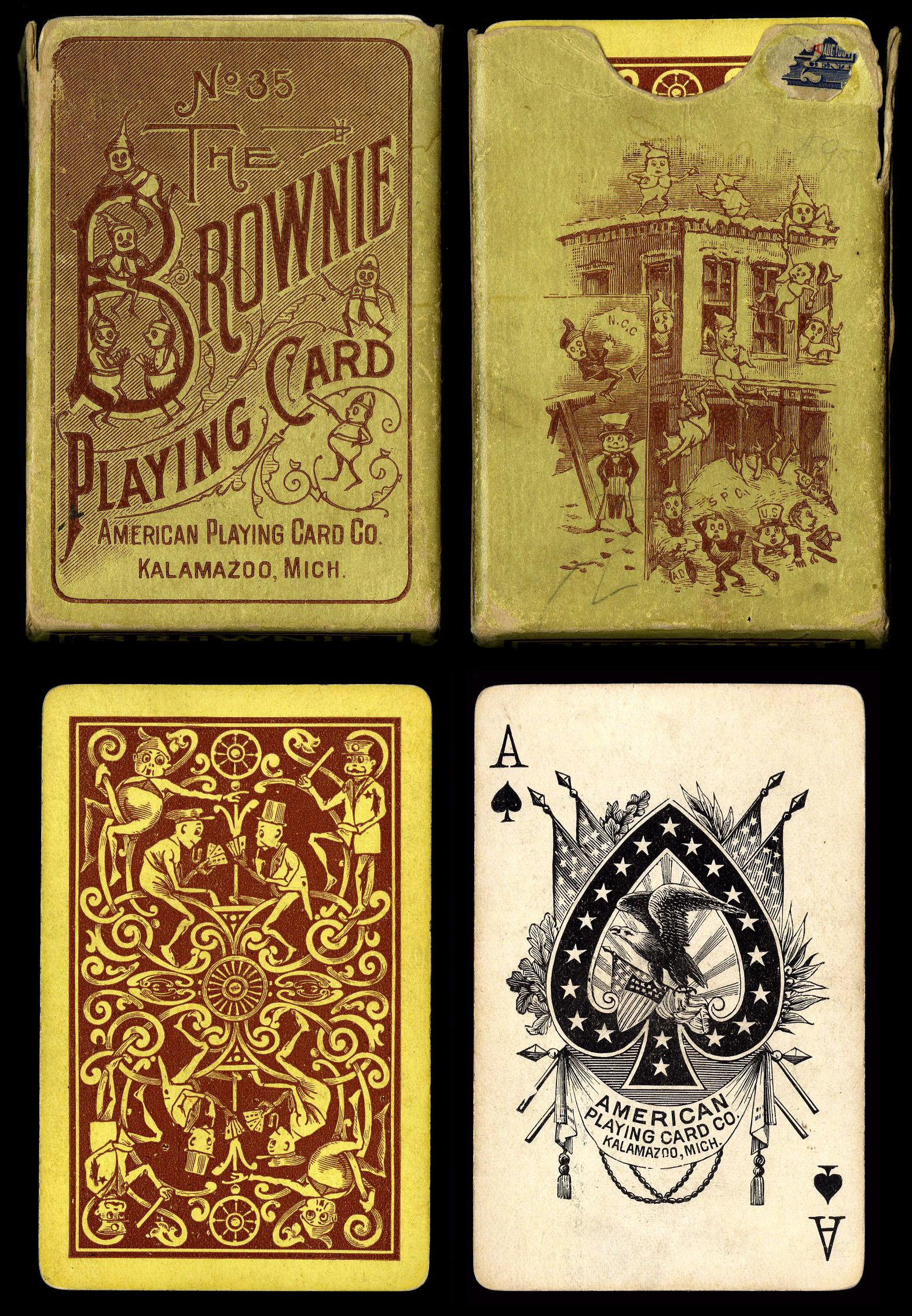Introduced in 1891. Discontinued in 1931. One of the most enduring and common of the Bicycle back designs. Examples can be easily found, even in its earliest US8 version.
Based on cards found in salesman’s sample folders, the earlier version of the Thistle back with a grass background, shown in the first two cards above, was discontinued sometime around 1899, and replaced by the version with a brick background. Most US8b decks have the brick background, but I have a US8b Thistle deck with the grass background, so the transition likely took place during the early US8b years. See a comparison of the two different versions of Thistle, below.
The Thistle back is unique in that it featured cartoon characters that were presumably licensed for use on the cards: the Brownies, created by Palmer Cox. According to Wikipedia, Palmer Cox (1840 – 1924) was a Canadian illustrator and author, best known for the Brownies, his series of humorous verse books and comic strips about the mischievous but kindhearted fairy-like sprites. The cartoons were published in several books, such as The Brownies, Their Book (1887). Due to the popularity of Cox’s Brownies, one of the first widely distributed handheld cameras was named after them, the Eastman Kodak Brownie camera. A postcard image of the Brownies in action is reproduced, below.
The American Playing Card Company also issued a Brownie deck of playing cards, shown in the last image, below. The theme of Brownies playing with cards is repeated on this back design, although the execution is different from the Thistle version. The Brownies also appeared on several jokers for National (Apollo, Bridge) and U.S. Playing Card Co. (Five Hundred) decks of cards.
Like several other Bicycle back designs, Thistle can be found in the form of a music deck. The other known designs that were adapted for music decks are Cupid (Sod), Emblem, Lotus, Old Fan, Safety, and Wheel No. 1. Please see the Lotus page for an example of a complete music deck. There is no evidence that Russell and Morgan or the United States Playing Card Company ever issued such decks, so it is my assumption that blank faced Bicycle decks were purchased and the music elements were then printed by third party printers.
SALES DATA
A red Thistle sample card sold on eBay for $34 on 2/19/17.
A blue US8c Thistle ace of spades sold on eBay for $13 on 4/18/17.
A VG- blue US8b Thistle deck + joker (sod) (no box) sold on eBay for $123 on 5/01/17.
A G red US8d Thistle ace of spades sold on eBay for $4 on 5/22/17.
A VG/EX blue US8d Thistle deck with joker (no box) sold on eBay for $58 on 12/05/17.
An EX blue US8d Thistle deck with joker (no box) sold on eBay for $111 on 9/02/20.
A G- blue US8 Thistle deck in GE OB3 box sold on eBay for $182 on 12/18/20.
